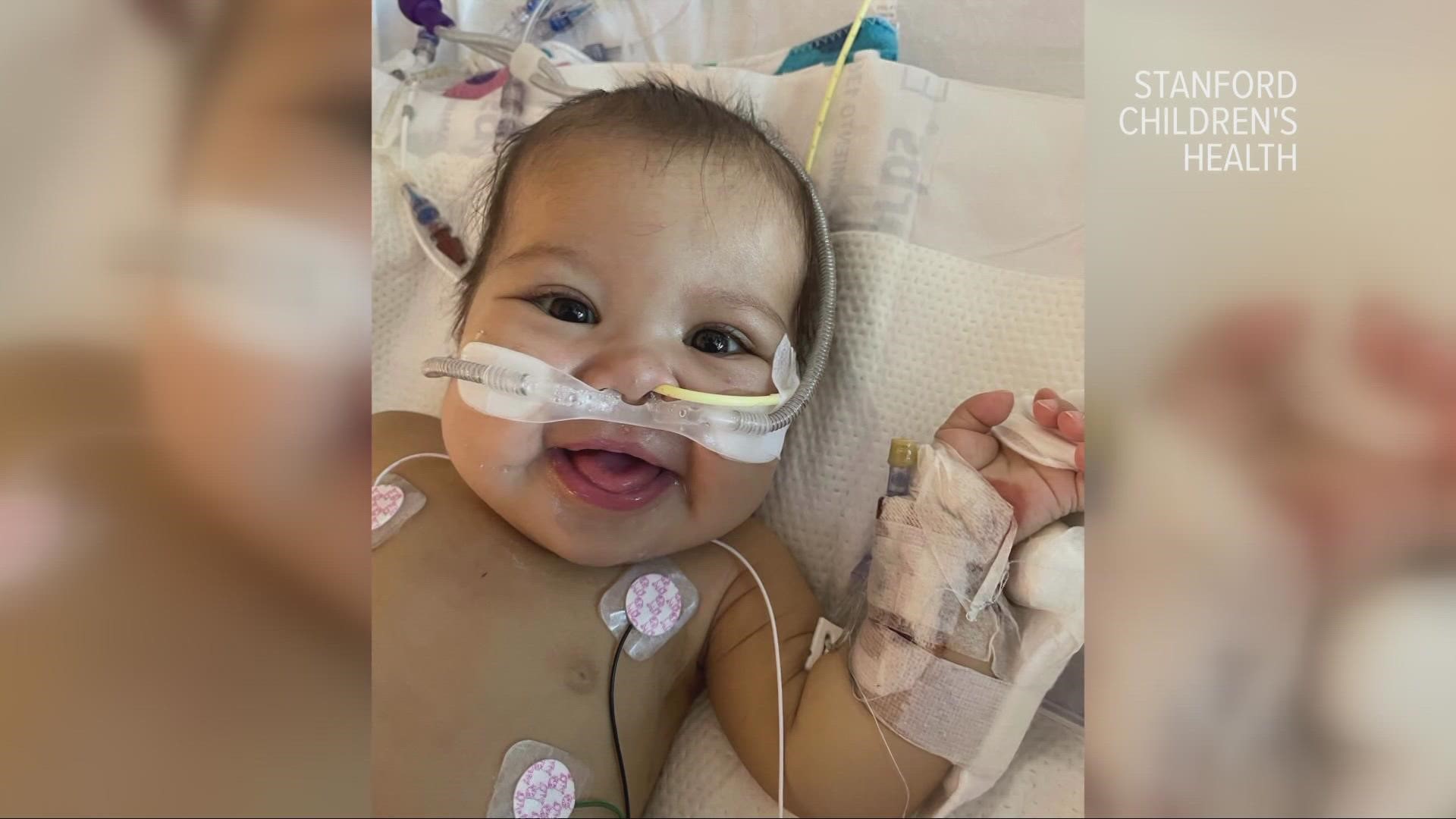GRANITE BAY, Calif. — At only two months old, doctors diagnosed Maya Hancock with Biliary Atresia. It's a condition that stops the liver from functioning as it should. It's also one of the main causes of liver transplants in infants. She underwent surgery to fix it, but it was unsuccessful.
Maya's parents were told she would need to join the organ transplant waitlist.
An offer came quickly and the family traveled to Lucile Packard Children's Hospital at Stanford in Palo Alto for Maya's treatment.
"You have to kind of pick up your whole life and move it down there and be ready to stay there for a while. That first offer wasn't good for us. Maya wasn't healthy enough to receive it, and so we packed everything back up and came back," said Maya's father, Mason Hancock.
In a true miracle, another offer appeared a week later. The transplant was successful and now Maya is a healthy two-year-old.
"Without that organ donation, she wouldn't just be struggling, she would not be surviving," Mason Hancock said. "It saved our little girl and you know, it's invaluable."
More than 100,000 Americans are waiting for a transplant on that same list. Every nine minutes, a new name is added. It's not common to see offers back-to-back as the Hancock family did. Some patients have to wait for years.
"It's sad when you see a child is so sick and can we can't get a liver," said Stanford Children's Hospital Transplant Surgeon Dr. Carlos Esquivel. "Sometimes they are so weak that they cannot even walk, or they cannot even eat."
An evaluation process is the only thing that comes between a donor and saving lives. Esquivel said it's the kindness of families that makes all the difference.
"You do a liver transplant and then you see them a year later, running around in the clinic," he said. " The resilience of children is just amazing."
If you want to learn more about how to become an organ donor visit this website.
ABC10: Watch, Download, Read
Watch more on ABC10



















